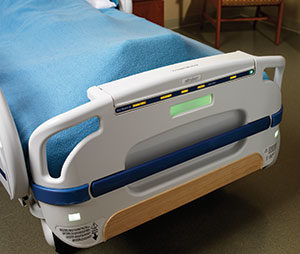I had some interesting conversations recently with four environmental services (ES) directors centered on how they and their teams are using technology to optimize cleaning and disinfection performance to improve safety and boost efficiency. The interviews were part of my research for our annual Trends in Health Care report, which was released last week.
As we discussed various types of technologies, equipment and software in use, it was clear that all of the ES leaders were looking for better ways to achieve some or all of the following objectives:
- Verify cleaning thoroughness
- Optimize efforts to kill multidrug-resistant organisms
- Boost throughput by communicating room-cleaning status more precisely
- Reduce risks of patient or staff falls
- Better monitor hand-hygiene compliance
Interestingly, there was wide variation in the specific types of technologies the ES leaders were using to help achieve these goals. All were using either marking gels with ultraviolet light (UV) or adenosine triphosphate processes to measure cleaning thoroughness. A couple recently had deployed UV light disinfection units to supplement their cleaning and disinfection protocols, particularly in areas where immunocompromised patients were treated, including a bone marrow transplant unit.
A few expressed interest in the potential of hand-hygiene monitoring systems to help address what all saw as the primary challenge to improving infection prevention efforts, yet their organizations still were evaluating the potential of this technology.
At least one of the sources has been using mobile tablets to capture and communicate information on room-cleaning status to improve throughput in his facilities. This same source was extolling the virtues of tried-and-true and, perhaps, less sexy "technologies," such as some of the more advanced floor-scrubbing systems that eliminate the need to use harsh stripping chemicals and can minimize slip-and-fall risks.
It was encouraging to hear the amount of research and ongoing evaluation they continue to do in exploring the many new technologies that are hitting the market. Still, this process takes considerable time and requires continuous effort to keep up with the latest research, which oftentimes doesn’t answer all of the questions hospitals have.
To get an inside look at some of the many ways these ES leaders and their teams are expanding their use of technology to create more efficient teams and safer environments, read the story here.
In the meantime, feel free to share with us your stories about some of the technologies that are helping you and your team in the effort to maintain safe environments while reducing the incidence of health care-associated infections.




